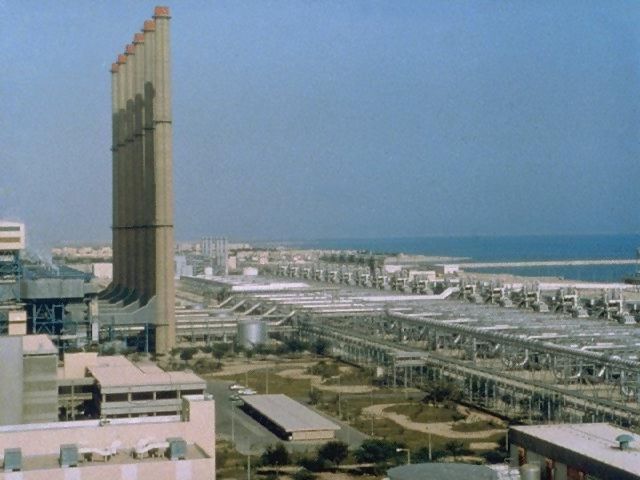There is a looming water crisis for everyone on the globe as populations rise, as pollution increases and as climate and weather patterns change. There is already a water crisis in many developing nations and in some not-so-developing regions like Australia and California. The stats for "embedded" or "virtual" water are sobering -- for example, the production of 1 kilogram of beef costs 15,500 liters of water
Desalination is one way of addressing some of our water problems. Desalination can be accomplished with a number of expensive, energy-intensive technologies including distillation, ion-exchange and reverse osmosis. Reverse osmosis (RO) is a well-established desalination technology but the challenge is the sheer amount of energy consumed in the process. The key to the economics of the reverse osmosis process is the membrane.
NanoH2O, a well-funded water start-up is commercializing a new membrane material for reverse osmosis based on technology developed by UCLA's Eric Hoek.
"It all comes down to the performance of the membrane," claims Jeff Green, the startup's CEO. "A more productive membrane allows less energy to be used or provides higher throughput."
A higher-performance, more permeable membrane allows more fresh water to cross the barrier with less pressure from a pump, a pump that needs to be driven by an energy source, be it natural gas, diesel, or coal. The high pressure pump consumes 35 percent to 60 percent of the process' energy budget. According to the company, municipal and industrial plants optimized for NanoH2O’s membranes can expect up to a 20 percent reduction in energy consumption, or a 70 percent increase in water production, or a 40 percent smaller plant footprint.
According to Green, seawater desalination is about two-thirds of the desalination market. Another 20 percent is for desalination of brackish water and the remainder is for desalination of waste water streams.
The industry standard membrane module is a cylinder 8 inches in diameter and 40 inches long. A flat sheet of membrane is spiral wound in the cylinder. Under pressure, the desalinated water moves through the membrane into a tube on the inside while the waste stream or brine stream remains on the outside. A typical pressure vessel contains a number of the membrane modules.
Green said, "We will be able to produce the entire product - from fabricating the membrane to the membrane module itself." And the goal is to make a membrane module that fits into RO systems with an identical size and shape to the existing product.
Traditional membranes have been made from a polyamide material for decades but they had a propensity for fouling and “fouling can severely degrade the productivity of the process or cause a complete shut-down of a system,” said Green.
"If you want to move this forward - you need a better membrane. We have added nano-particles to the synthesis of the membrane - it is not a coating - it is a nanocomposite. That allows these systems to have much lower operating pressures or much higher throughput." And that translates to less energy consumption or greater productivity. The firm claims that NanoH2O's technology is the first materials breakthrough in RO membranes since the 1970s.
Initial VC funding for NanoH2O was a $5 million Round A from Khosla Ventures followed by $20 million from Oak Investment Partners and Khosla Ventures. That funding has taken them from an academic research project to the cusp of manufacturing a commercial product.
The goal now is to scale-up manufacturing. The firm has 26,000 square feet of manufacturing infrastructure in the Los Angles area and looks to come to market with a commercial product in mid-2010.
Looking forward, Green envisions the desalination market becoming a much more global industry to drive down the cost of the process.
Other firms working on membranes for water applications include the industrial plumbing giant Danfoss, while Novozymes and a startup called Aquaporin are doing similar work. These companies have produced samples and hope to be in the market by this year or next. The challenge, said Aquaporin CEO Peter Jensen to Greentech Media, is making the membrane durable.
”We (the U.S.) are entering an era of water scarcity (as opposed to large chunks of the rest of the world who are already in the midst of water scarcity),” said Gayle Pergamit, CEO of AguaVia, a membrane start-up in an email. "Even if there wasn’t one whit of climate change, we are still going to run out of water. Nanotechnology-based water filtration could deliver completely pure water from any source at vastly reduced energy usage and lower total costs."
Resources
IDA International Desalination Association
Desalination & Water Reuse
Saudi Arabia's Jubail Desalination Plant is the largest in the world (picture below)




